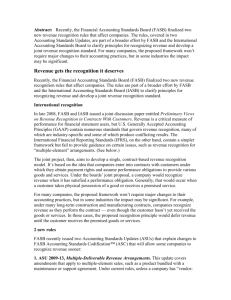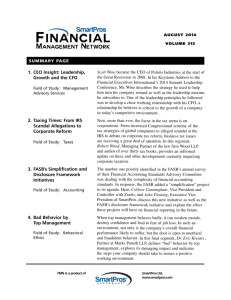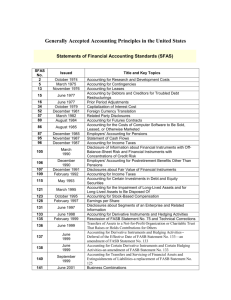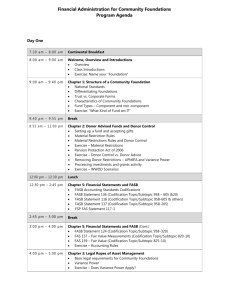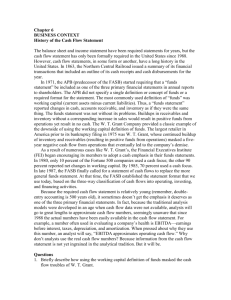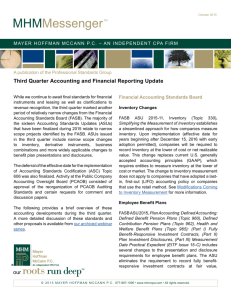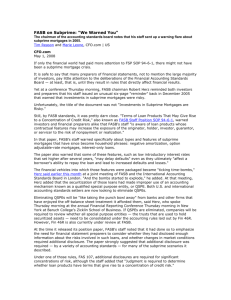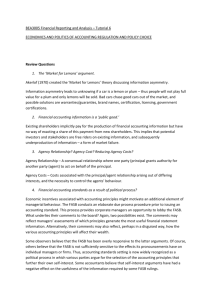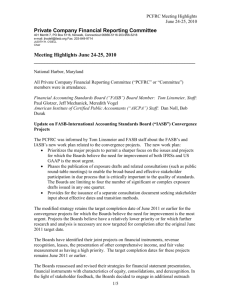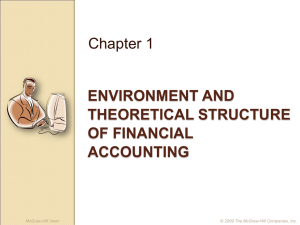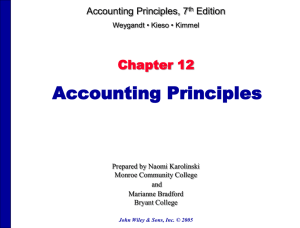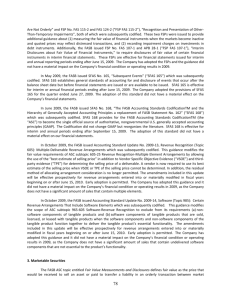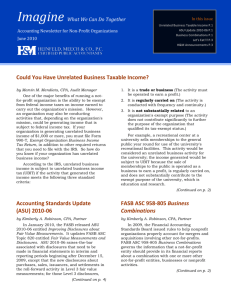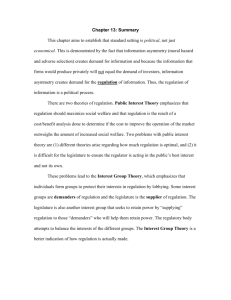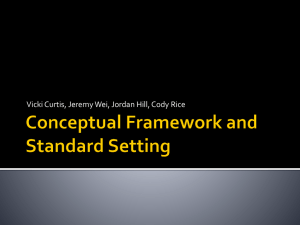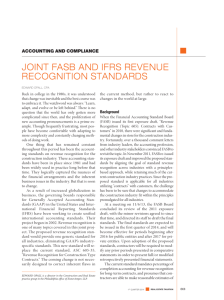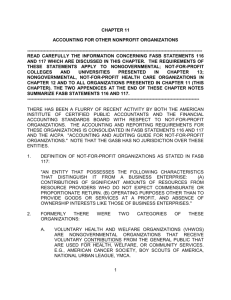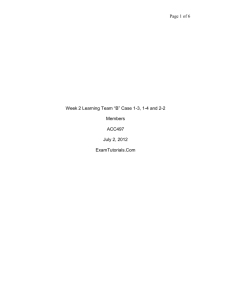a PDF
advertisement
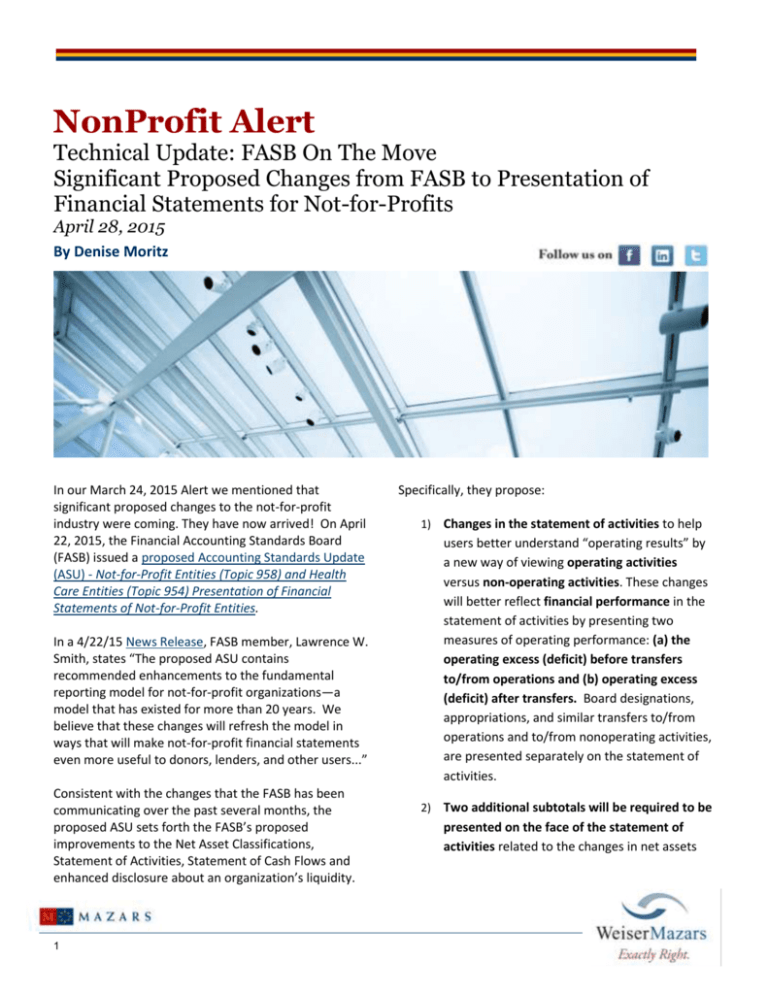
NonProfit Alert Technical Update: FASB On The Move Significant Proposed Changes from FASB to Presentation of Financial Statements for Not-for-Profits April 28, 2015 By Denise Moritz In our March 24, 2015 Alert we mentioned that significant proposed changes to the not-for-profit industry were coming. They have now arrived! On April 22, 2015, the Financial Accounting Standards Board (FASB) issued a proposed Accounting Standards Update (ASU) - Not-for-Profit Entities (Topic 958) and Health Care Entities (Topic 954) Presentation of Financial Statements of Not-for-Profit Entities. In a 4/22/15 News Release, FASB member, Lawrence W. Smith, states “The proposed ASU contains recommended enhancements to the fundamental reporting model for not-for-profit organizations—a model that has existed for more than 20 years. We believe that these changes will refresh the model in ways that will make not-for-profit financial statements even more useful to donors, lenders, and other users...” Consistent with the changes that the FASB has been communicating over the past several months, the proposed ASU sets forth the FASB’s proposed improvements to the Net Asset Classifications, Statement of Activities, Statement of Cash Flows and enhanced disclosure about an organization’s liquidity. 1 Specifically, they propose: 1) Changes in the statement of activities to help users better understand “operating results” by a new way of viewing operating activities versus non-operating activities. These changes will better reflect financial performance in the statement of activities by presenting two measures of operating performance: (a) the operating excess (deficit) before transfers to/from operations and (b) operating excess (deficit) after transfers. Board designations, appropriations, and similar transfers to/from operations and to/from nonoperating activities, are presented separately on the statement of activities. 2) Two additional subtotals will be required to be presented on the face of the statement of activities related to the changes in net assets without donor restrictions, for 1) (a) and 1) (b) above. 2 3) The net asset classification will be revised to two classifications from three (net assets without donor restrictions vs. net assets with donor restrictions). 4) Changes in the notes to help financial statement users better assess a not-for-profit’s liquidity and how it is being managed. 5) All operating expenses will be required to be reported by both function and nature and investment return be reported net of related expenses, to enable a more comparable and useful presentation. 6) Changes to the statement of cash flows are intended to make it more understandable by (a) presenting cash flows provided by operating activities using the direct method of reporting, rather than the indirect (reconciliation) method, and (b) classifying cash flows in ways that are more consistent with classifications in the statement of activities. The following specific changes are being proposed: (a) classify as operating cash flows (rather than as investing cash flows) those cash flows resulting from (1) purchases of long-lived assets, (2) contributions restricted to acquire long-lived assets, and (3) sales of long-lived assets; (b) classify as financing cash flows (rather than as operating cash flows) those cash flows resulting from payments of interest on borrowings, including cash management activities; and (c) classify as investing cash flows (rather than as operating cash flows) those cash flows resulting from receipts of interest and dividends on loans and investments other than those made for programmatic purposes. 7) Changes to how property, plant, and equipment is placed into operation. The proposed amendments suggest a “placed-inservice approach” for reporting expirations of restrictions on gifts of cash or other assets to be used to acquire or construct a long-lived asset, thus eliminating the option to release the donor-imposed restriction over the estimated useful life of the acquired asset. 8) Enhanced disclosures, both quantitative and qualitative, in particular for underwater endowment funds, which are donor-restricted endowment funds for which the fair value of the fund at the reporting date is less than either the original gift amount or the amount required to be maintained by the donor or by law that extends donor restrictions. 9) Report investment income net of external and direct internal investment expenses. Additionally, certain items are being suggested to be reported separately from operations, such as a change in the way goodwill is impaired, and equity transfers, among others. Many of these changes will not only be reflected within the financial statements, but in accompanying footnotes, which will require more detailed explanatory information. The FASB is conducting a Webcast on Tuesday, May 12, 2015 1:30-3:10 p.m. EDT to discuss these proposed amendments. See the FASB website www.fasb.org for details. Stakeholders are encouraged to review and comment on the proposed ASU, by August 20, 2015. We will continue to keep you informed of the latest developments as this situation unfolds over the upcoming months. We will also issue a more In-depth analysis of the proposed changes in the near future. Stay tuned! For more information contact: Denise Moritz, CPA Senior Manager 646.225.5913 Denise.Moritz@WeiserMazars.com Visit us on www.weisermazars.com Disclaimer of Liability Our firm provides the information in this e-newsletter for general guidance only, and does not constitute the provision of legal advice, tax advice, accounting services, investment advice, or professional consulting of any kind. The information provided herein should not be used as a substitute for consultation with professional tax, accounting, legal, or other competent advisers. Before making any decision or taking any action, you should consult a professional adviser who has been provided with all pertinent facts relevant to your particular situation. Tax articles in this e-newsletter are not intended to be used, and cannot be used by any taxpayer, for the purpose of avoiding accuracy-related penalties that may be imposed on the taxpayer. The information is provided “as is,” with no assurance or guarantee of completeness, accuracy, or timeliness of the information, and without warranty of any kind, express or implied, including but not limited to warranties of performance, merchantability, and fitness for a particular purpose. WeiserMazars LLP is an independent member firm of Mazars Group. CONFIDENTIALITY NOTICE: The information contained in this communication may be privileged, confidential and protected from use and disclosure. If you are not the intended recipient, or responsible for delivering this message to the intended recipient, you are hereby notified that any review, disclosure, distribution or copying of this communication is strictly prohibited. If you have received this communication in error, please notify the sender immediately by replying to the message and deleting it from your computer. Thank you for your cooperation. WeiserMazars LLP 3


